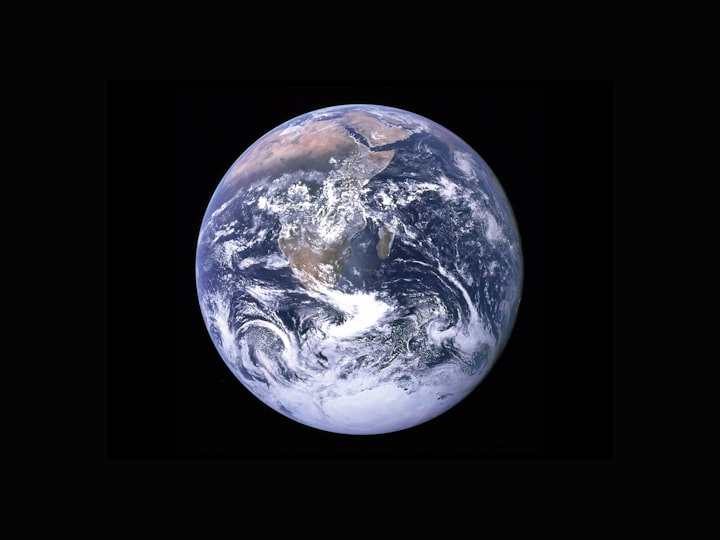
A Cosmic Menace: The Impending Asteroid Threat
Prepare for a celestial showdown! Some enormous asteroids are on a collision course with Earth, and it's essential to understand their shapes, sizes, and potential devastation. Which ones pose the gravest danger, and which are most likely to impact our planet? Get ready for a cosmic bunker tour in this edition, as we explore the aftermath of a colossal asteroid strike on Earth.
Clearing the Celestial Confusion
To begin, let's clarify our celestial terminology. While we commonly refer to these celestial objects as asteroids, not everything on our list falls under that category. We're dealing with both asteroids and comets here. While they're part of our solar system, they have distinct characteristics.
Asteroids are remnants from the early formation of our solar system, and most of the million-plus known asteroids orbit the Sun within the asteroid belt, situated between Mars and Jupiter. On the other hand, comets are icy conglomerates of frozen gases, rock, and dust. They also orbit the Sun but undergo dramatic transformations when approaching it, emitting vast clouds of dust and gas, sometimes rivaling the size of planets. With over 3,000 comets known in our solar system, could any of them be plotting a cosmic collision course with Earth?
Encounter with the Chelyabinsk Meteorite
Let's start with a relatively smaller object that has already impacted our planet: the Chelyabinsk meteorite. This space rock exploded over Russia in February 2013, boasting a diameter of approximately 18 meters. Despite its modest size, its impact was far from insignificant. The explosion released energy equivalent to 500,000 tons of TNT, a force approximately 30 times more powerful than the Hiroshima bomb. It injured over 1,200 people and inflicted substantial property damage, demonstrating the substantial effects even a relatively small celestial visitor can unleash.
The Chicxulub Asteroid: A Dinosaur's Nightmare
Now, let's journey back 65 million years to an event that reshaped Earth's history. The colossal Chicxulub asteroid is believed to have played a pivotal role in the mass extinction of the dinosaurs. With a diameter ranging between 10 to 15 kilometers, this celestial behemoth struck Mexico's Yucatan Peninsula, leaving behind an enormous crater measuring 180 kilometers in width and 900 meters in depth. The impact triggered devastation on a global scale. The blast wave sent vast quantities of rock into the atmosphere, generating tsunamis towering as high as 1,500 meters. While it didn't entirely blot out the sun, the resulting soot diminished sunlight, severely affecting plant growth and disrupting the food chain, ultimately leading to the collapse of entire ecosystems.
Oumuamua: A Mysterious Visitor
Among the objects with the potential to collide with Earth, Oumuamua stands out due to its intriguing shape. This enigmatic, cigar-shaped rock spans approximately 400 meters in length. While NASA classifies it as a comet, it also displays asteroid-like qualities, and its origin in space remains a mystery as it lacks ties to any star system. In 2017, it passed by Earth at a safe distance of 41 million kilometers. However, had it struck our planet, it could have unleashed widespread destruction. Darkness would shroud our world, and if the ensuing debris remained in our atmosphere, it would imperil countless plants, animals, and humans reliant on sunlight.
In conclusion, the threat of asteroids and comets colliding with Earth is a reality we must remain vigilant about. While we've explored a few of these celestial interlopers, it's crucial to continue monitoring the skies and developing strategies to safeguard our planet from potential cosmic catastrophes.
Beware the Asteroids: A Cosmic Threat
When it comes to potential celestial threats, it's not just any asteroid we should be concerned about. One particular asteroid demands our attention: the one with a one-in-1700 chance of colliding with Earth in September 2182. While it measures just half a kilometer in width, its size shouldn't be underestimated. Remember the significant impact of the Chelyabinsk meteorite? Well, brace yourselves for another close encounter with this asteroid every six years.
Shoemaker Levy 9: A Cosmic Catastrophe Averted
Our next subject is not a threat to Earth anymore. Comet Shoemaker Levy 9 met its end in 1994 when it collided with Jupiter. However, envision the devastation this 1.5 to 2-kilometer-wide comet would have caused if it had struck our planet. The collision resulted in the comet breaking into 20 pieces, each generating explosions akin to 300 million atomic bombs. Plumes of debris soared as high as 2,000 to 3,000 kilometers, and temperatures in the atmosphere surged to 30,000 to 40,000 degrees Celsius. Fortunately, Earth dodged this cataclysmic bullet.
Series: A Colossal Threat
Last but by no means the least, we have an asteroid so immense that it's classified as a dwarf planet. Series is the undisputed giant of the asteroid belt, constituting a staggering 25% of the belt's total mass. With a radius of 476 kilometers, it dwarfs the Chelyabinsk meteorite. Should Series collide with Earth, the consequences would be nothing short of apocalyptic. Its sheer size alone would blot out the Sun as it approached, unleashing an impact that would strip away 10 kilometers of Earth's crust. Hypersonic shockwaves would ripple across the globe, incinerating everything in their path. There would be no survivors, and our planet would transform into a molten, glowing sphere amidst a cloud of soot, akin to a nuclear winter.
About the Creator
Dekey
"Passionate explorer of the cosmos, bridging reality and imagination. Inquisitive mind unraveling the universe's mysteries. 🚀🌟 #ScienceEnthusiast"





Comments
There are no comments for this story
Be the first to respond and start the conversation.